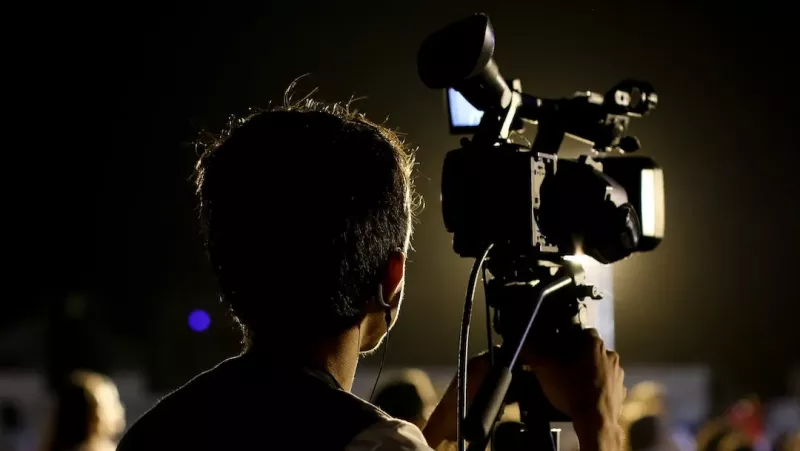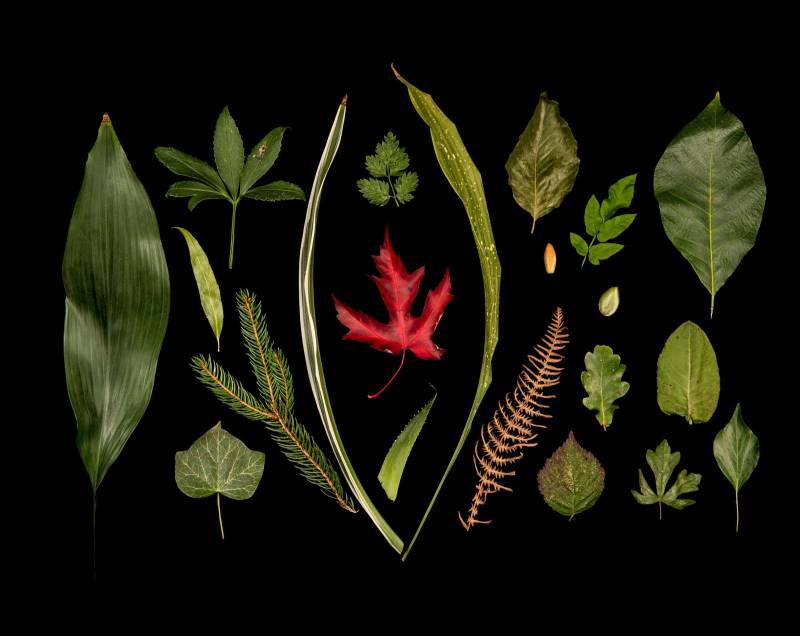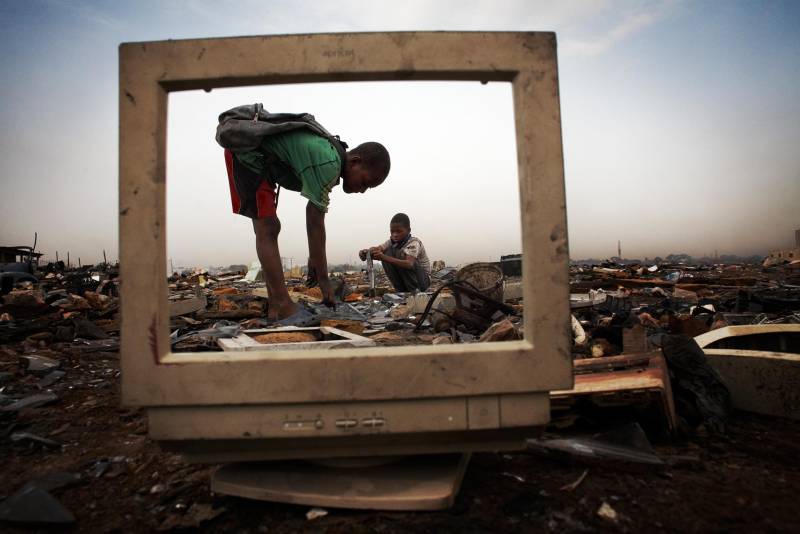AUSTRALIAN FILM, TELEVISION AND RADIO SCHOOL
Australia’s preeminent screen arts and broadcast school benefits from a beautiful setting in one of the most pleasant parts of Sydney, as well as a wealth of industry lecturers and connections to the country’s working film and TV world. Notable alumni include last year’s Oscar best director nominee Jane Campion (Power of the Dog) and Black Widow filmmaker Cate Shortland, in addition to a slew of past Oscar nominees and winners in technical categories, like David White (sound editing for Mad Max: Fury Road), Andrew Lesnie (cinematography for The Lord of the Rings) and Tony McNamara (best original screenplay with The Favourite).

CENTRO DE CAPACITACION CINEMATOGRAFICA (MEXICO)
Mexico’s most prestigious film school prides itself on the gender parity of its student body (a goal it first achieved in 2020) and its track record in turning out world-class professionals, including Black Widow cinematographer Gabriel Beristain, Brokeback Mountain cinematographer Rodrigo Prieto, Oscar-nominated production designer Felipe Fernández del Paso (Frieda), and director Tatiana Huezo, whose feature debut Prayers for the Stolen made the 2022 Oscar international feature shortlist.
CENTRO SPERIMENTALE DE CINEMATOGRAFIA (ITALY)
Europe’s oldest film school (it was established in 1935 under Benito Mussolini’s pro-cinema fascist regime), Italy’s national film school offers three-year study programs across the full range of top and below-the-line professions, from directing, acting and producing, to screenwriting, animation and set design. Classes are small (around six per class, with a full 14 for the acting course, evenly split between men and women), but a good knowledge of Italian and English is a must. The school also operates branches in the Lombardy, Piedmont and Sicily regions of Italy.
DEUTSCHE FILM- UND FERNSEHAKADEMIE (GERMANY)
Berlin’s acclaimed film school, which boasts a wide range of alumni from blockbuster director Wolfgang Petersen (Das Boot, Air Force One), to art house darlings Christian Petzold (Barbara) and Emily Atef (3 Days in Quiberon), prides itself on a bespoke, artisanal approach to filmmaking that doesn’t ignore the realities of the global industry. The DFFB recently added new education programs including Next Wave, a nine-month training course focusing on using international film festivals — including Cannes, Berlin and Rotterdam — to promote the sales, distribution, marketing and exhibition of indie films.
ECAM (SPAIN)
ECAM’s focus on practical skills and industry connections make it a favorite for those looking for a quick entrée into the business. Its job-oriented syllabus includes masters programs in color and digital grading and executive production for films and series, as well as an annual ECAM Series Market, in which students from its TV scriptwriting masters course present their final projects to Spanish industry professionals.
FILMAKADEMIE WIEN (AUSTRIA)
The #MeToo wave rocked Austria’s leading film school earlier this year when school alumnus, director Katharina Mückstein, leveled accusations against the Film Academy and (unnamed) members of staff, alleging abuse. Academy heads Danny Krausz and Oliver Kunz issued a statement condemning “all forms of abuse and discrimination” and have promised to investigate Mückstein’s claims, but the media attention has somewhat tarnished the school’s sterling reputation as one of the world’s leading art house institutions, where budding auteurs can learn directly from the masters, including professors Michael Haneke (the Oscar-winning director of Amour), and Cannes regular Jessica Hausner (Little Joe).
LA FÉMIS (FRANCE)
This Parisian-based state film school has a reputation for thoroughness and an exhaustive application process (detailed in Claire Simon’s 2016 documentary Le Concours), but it is hard to argue with the results. La Fémis alumni include master auteurs Claire Denis, Costa Gavras and François Ozon as well as a who’s who of the new generation, among them 2021 Palme d’Or winner Julia Ducournau (Titane), and Eskil Vogt, the Norwegian director and screenwriter whose script for The Worst Person in the World, co-written with frequent collaborator Joachim Trier, picked up an Oscar nomination for best original screenplay this year. La Fémis’ school president is none other than The Artist director Michel Hazanavicius.
LODZ FILM SCHOOL (POLAND)
Founded after World War II, the Lodz Film school has helped write the history of Polish cinema, with alumni including pioneers Andrzej Wajda and Krzysztof Kieślowski through to the current generation of ground-breaking directors such as Malgorzata Szumowska (Never Gonna Snow Again) and Jan Komasa (Corpus Christi). The school offers full and part-time instruction in film and TV directing, cinematography, film art, television production and acting. Fluency in Polish is required, but those who pass the entrance exam qualify for a yearlong Polish-language course before beginning their studies.
NATIONAL FILM AND TELEVISION SCHOOL (U.K.)
It’s been another busy year for the U.K.’s best-known film school, which over the past six months has bolstered its offerings by teaming with Warner Bros. Discovery to launch an “industry first” virtual production course, with Amazon Prime on a flagship three-year collaboration that will welcome 75 students into a new program, and with Disney on a new production accounting diploma. The school has also been doing its bit to improve diversity levels, with 32 percent of its 2022 cohort of students coming from ethnically diverse backgrounds, its highest figure yet. It was a good year for former students too, with graduates such as Lewis Arnold directing BAFTA best miniseries winner Time, Natalie Holt becoming the first female composer in the Star Wars universe thanks to her work on Obi-Wan Kenobi, and Richard Flynn doing the sound mix for awards season darling The Power of the Dog. The NFTS also added another Oscar to its collection, with graduate Aneil Karia claiming the Academy Award for best live-action short for The Long Goodbye, starring Riz Ahmed, while graduate animation film Do Not Feed the Pigeons from Antonin Niclass won the BAFTA for British short animation.
NATIONAL FILM SCHOOL OF DENMARK
Fluency in Danish and a (for European film schools) hefty tuition fee of around $25,000 (€20,000) per semester for non-EU residents means Denmark’s premier film school is not for everyone. In fact, the institution only admits one or two international students a year. But the education at the Copenhagen-based academy remains among the best in the world, as evidenced by recent Oscar wins for graduates Mikkel E.G. Nielsen (best film editing for Sound of Metal) and Thomas Vinterberg (best international feature for Another Round).
PRAGUE FILM SCHOOL (CZECH REPUBLIC)
Prague’s English-language film school strives to combine the artistic ambition of European auteur cinema with a hands-on, American indie approach to filmmaking. The curriculum leans into on-set training, with each student working on up to 30 productions a year. Famed graduates include Eternals actor Sebastián Viveros, Gold cinematographer Ross Giardina, Gully Boy cinematographer Jay Oza and Ananya Rane, a second unit director on Netflix actioner Extraction and Oscar-nominated Lion.
SAE INSTITUTE (SWITZERLAND)
While most European film schools hew to the auteur approach to artistic expression, Zurich’s SAE drills down into the tech skills necessary to make it in the global entertainment business. The SAE offers 1-3 year programs in everything from audio engineering and digital film production to VFX and 3D animation. As part of a global network of campuses and facilities — there are SAE institutes in 50 cities in 20 countries worldwide, including Nashville, Miami, San Francisco, Atlanta, Los Angeles, and Chicago —graduates have unprecedented access to industry professionals worldwide.
SAM SPIEGEL FILM AND TV SCHOOL (ISRAEL)
Israel’s first independent film university — backed by the estate of legendary Austrian-Jewish producer Sam Spiegel (On the Waterfront, Lawrence of Arabia) — the Jerusalem-based institution counts Berlin Golden Bear winner Nadav Lapid (Synonyms, Ahed’s Knee), Oscar winner László Nemes (Son of Saul) and Yaelle Kayam, creator of Netflix hit Shtisel, among its alumni, and its famed for its practice-oriented approach to filmmaking. Some 75 percent of its graduates are employed in the industry. This year, the school launched a new Series Lab initiative with Netflix and Paramount, partnering Israeli creators with international TV professionals to develop high-end series. Hagai Levi (Scenes From a Marriage, In Treatment) has joined the new program as an artistic adviser.
VICTORIA UNIVERSITY OF WELLINGTON (NEW ZEALAND)
Victoria University of Wellington’s Miramar Creative Center happens to sit just next door to the sprawling facilities of Peter Jackson’s moviemaking empire, spanning the Weta Group, Park Road Post and Stone Street Studios, making scholarships, internships and cross-over practical experience a commonplace for its students and graduates. The facility and its programs are geared toward intensive, hands-on education with state-of-the-art technology for a seamless transition to professional application.
TORONTO METROPOLITAN UNIVERSITY, FORMERLY RYERSON UNIVERSITY
Canadian director Atom Egoyan is the first writer in residence in the new two-year MFA in scriptwriting and story design program at Toronto Metropolitan University. The Sweet Hereafter director will mentor and teach screenwriting students and promote the film program offered by the School of Image Arts, whose recent graduates include Andrew Cividino, Nicole Dorsey and Brandon Cronenberg. Elsewhere at TMU, the Image Arts: Film program added an Integrated Digital option to cover film, animation, virtual reality, creative coding, projection mapping, digital media installations and 3D modeling. Ryerson was renamed as TMU to remove the legacy of Egerton Ryerson, who designed Canada’s notorious residential school system, which separated 150,000 indigenous children from their parents and families to extinguish their First Nations culture and history.
Credits




